

Imagine a world where the skyline of any city can be transformed overnight, thanks to the marvel of cargo drones. It sounds like science fiction, but it's happening now, reshaping the construction industry!
In our rapidly urbanizing world, the need for efficient and innovative solutions is paramount. Cargo drones are not just a trend; they're a revolutionary leap that is changing how construction projects are planned and executed.
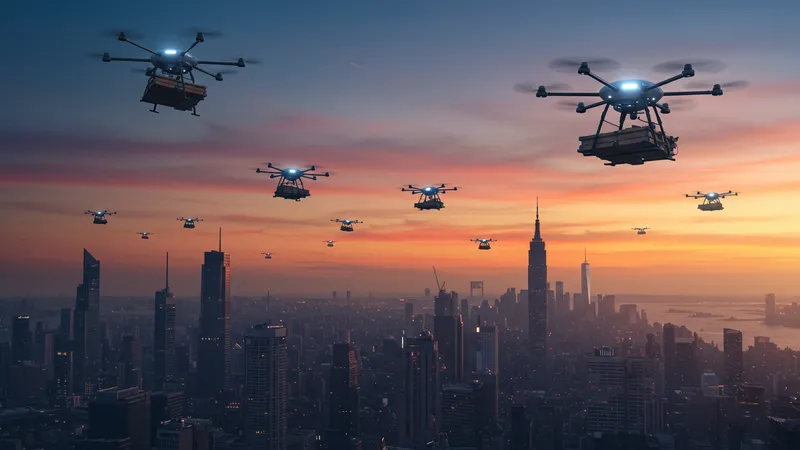
Cargo drones are scaling new heights, literally. They can carry heavy loads with precision that would otherwise require significant manpower and time. Used in large-scale projects like skyscrapers and bridges, they minimize human error and enhance safety. The implications are vast, not only saving time but cutting costs. But that’s not even the wildest part…
Consider logistics. The traditional methods of transporting construction materials involve trucks, cranes, and a lot of manual labor, leading to traffic congestion and environmental concerns. Enter cargo drones, which glide above all this chaos, ensuring faster delivery with a much lower carbon footprint. But what’s coming next could redefine everything we thought we knew about construction logistics…
What happens next shocked even the experts and could redefine the entire landscape of how we build our world. Stay tuned as we uncover the potential and challenges these drone innovations continuously bring to the forefront of modern construction...
One of the most astonishing impacts of cargo drones is their ability to cut down construction times significantly. In traditional setups, transporting materials to hard-to-reach areas could take days. With cargo drones, the same tasks are accomplished in a matter of hours. This speed offers a competitive edge for construction firms, allowing them to take on more projects within a shorter timeline. Some companies have reported up to a 40% reduction in project durations, leading to increased profits. But there’s one more twist that adds to the excitement of using this technology.

Interestingly, the precision that drones bring to the construction site cannot be underestimated. GPS and advanced sensors ensure that materials are dropped with pinpoint accuracy. This technological precision increases the quality and efficiency of work, drastically reducing waste and the need for rework. It’s no wonder that developers who embrace this technology see substantial drops in their overall costs. What you might not expect is how these efficiencies translate into unexpected savings elsewhere.
Beyond efficiency, cargo drones are also hailed for their flexibility. Whether it's navigating tight urban landscapes or challenging rural terrains, drones can operate in environments where traditional methods struggle. This adaptability has made them indispensable in complex projects, where quick changes in project design are necessary. Furthermore, the environmental benefits offered by drones are becoming a selling point, as firms strive for greener construction practices. Yet, what stands out even more is how these transformations are sparking changes in consumer expectations.
The evolution of cargo drones in the construction industry represents not just a technological leap but also a cultural shift. As stakeholders become more accustomed to the speed and agility these machines offer, the standards for construction efficiency continue to rise. This new reality has compelled industry players to rethink their operational strategies, ensuring they remain competitive. But what you read next might change how you see this sector forever.
The environmental benefits of using cargo drones are one of the most compelling arguments for their adoption in the construction industry. Traditional construction methods often leave a significant carbon footprint due to the heavy reliance on fossil fuels and manpower. Drones, on the other hand, offer a cleaner alternative. Operated electrically, they produce minimal emissions, aligning with global efforts to reduce greenhouse gases. However, what’s truly fascinating is the potential scale of these environmental benefits if drones were adopted globally.
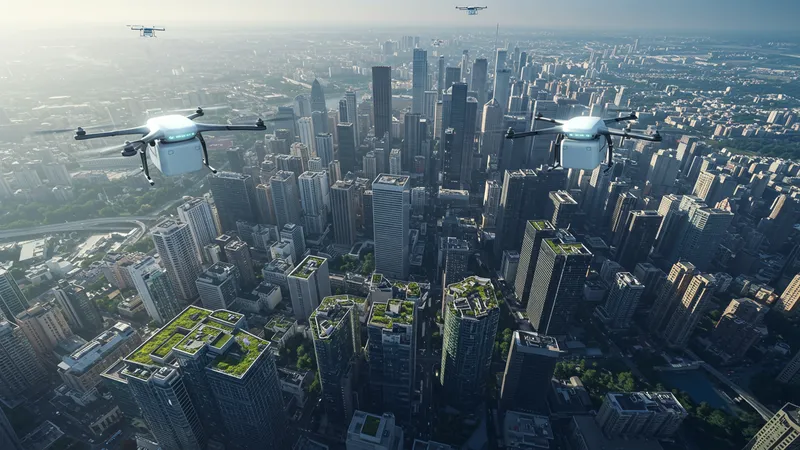
In urban centers, the reduction in vehicular traffic and noise pollution caused by traditional construction transport is another advantage. The use of cargo drones helps reduce congested roads, leading to a decrease in vehicle emissions and an improvement in air quality. The multifaceted benefits extend even further, considering cities that can better meet their sustainability goals. One of the more unexpected outcomes is the rising public interest and support for drone technology as a driver of greener urban development.
The ripple effects of employing drones stretch beyond environmental benefits—they herald a new era of renewable energy in construction. Companies now look at integrating solar-powered stations and charging points for drones across construction sites. This not only supports sustainable construction practices but also paves the way for innovation in energy storage solutions. While the potential here is immense, the challenges around energy efficiency and storage present hurdles that must be overcome.
One issue yet to be solved comprehensively is the scalability of using cargo drones for larger-scale operations. As the technology matures, so does the infrastructure required to support it. Developers and city planners are keenly watching these developments, curious about future possibilities. The marriage between drone capabilities and infrastructure development holds promise for redefining urban landscapes completely. What lies ahead will reveal hidden dynamics and perhaps trigger unexpected transformations in the way our cities operate.
The deployment of cargo drones has broken significant barriers in terms of accessibility on construction sites. Remote and hard-to-reach areas that used to hinder project timelines are no longer a challenge. Drones are opening possibilities in places like mountains, islands, or densely populated slums where traditional transport methods cannot easily venture. With drones, sites previously deemed unfeasible are suddenly in play, fueling a wave of interest in untapped project territories.
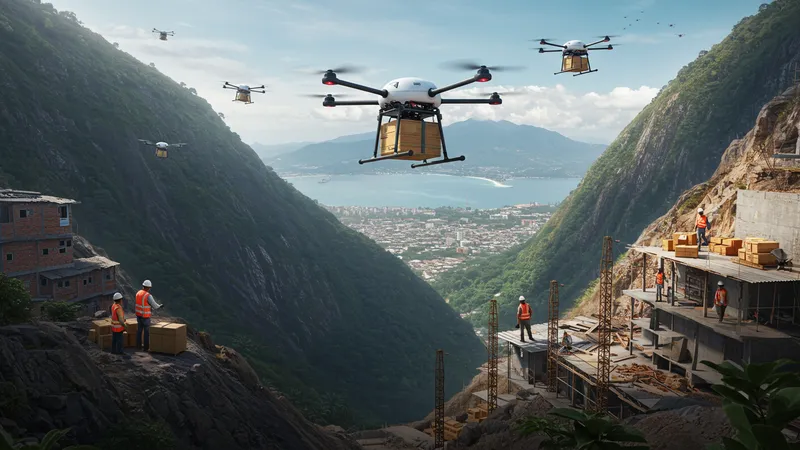
This newfound accessibility is not just transforming construction; it’s changing economies. Drones democratize access to resources, empowering regions that were previously sidelined due to poor infrastructure. By creating new pathways for construction materials to reach their destinations, drones are fostering economic growth. Companies operating in these new frontiers report enhanced collaboration opportunities, connecting local industries with broader markets. However, the implications of this widespread access still unfold in surprising ways.
Another captivating aspect of drone accessibility is the ability to conduct site surveys swiftly and accurately. What was once a lengthy process now takes a fraction of the time, allowing faster decision-making and project execution. This speed benefits not only construction companies but also clients who demand quick turnaround times. Yet, as with any new technology, it’s essential to consider the unforeseen consequences of such widespread use.
While the advantages are clear, the rise of drone technology in construction raises questions about privacy and regulation. As drones become ubiquitous, debates about airspace use and legal frameworks intensify. The regulatory landscape remains uncertain, and stakeholders must navigate this evolving terrain carefully. What you discover next about these drones will challenge preconceived notions about technology's role in reshaping industry landscapes.
Safety is a paramount concern in the construction industry. The advent of cargo drones has begun to redefine what safety means on the job site. Drones are capable of delivering materials to heights that would traditionally require scaffolding or cranes – significantly reducing accidents associated with these methods. This technology also reduces the number of on-site workers needed, cutting down on the likelihood of human error. But the safety enhancements don't stop there.
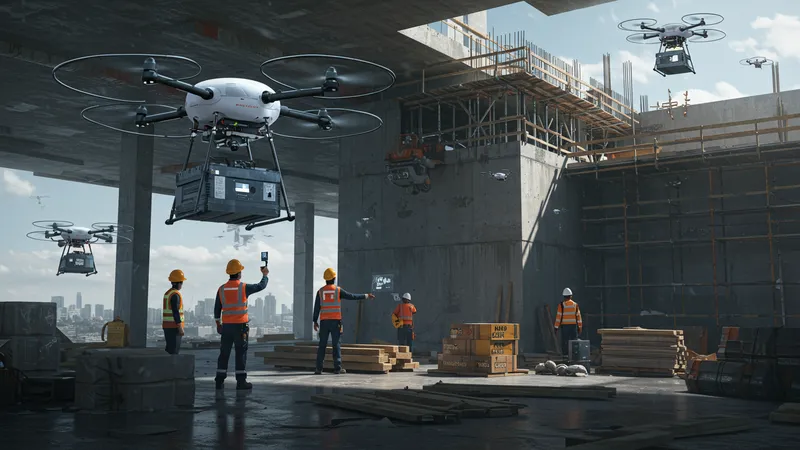
With drones taking over some of the most dangerous tasks, human workers can concentrate on safer, more complex jobs that require a strategic mindset rather than physical prowess. Moreover, drones equipped with cameras and sensors can perform safety inspections, detecting potential hazards before they pose a threat. The shift towards a safer working environment is a boon not just for workers but also for companies looking to improve their safety record. However, there’s more to this story than just a decline in accident rates.
Insurance premiums for construction companies might also decrease as a direct result of reduced accident rates and enhanced safety protocols thanks to drone technology. These savings benefit the companies and can also lead to more competitive pricing for clients. Yet, as drones become an integral part of safety standards, questions arise about the accountability when things go wrong and where liability falls. The evolving legal framework surrounding drone use in construction is multifaceted and continually adapting to these new safety dynamics.
As these machines become synonymous with safety on construction sites, the definition of job roles is changing. Training workers to operate and monitor drones is becoming paramount, creating a demand for new skill sets in the workforce. This evolution presents a double-edged sword, offering opportunities but also requiring retraining and adaptation. The next development in drone utilization will illuminate even further how this technology can transcend mere construction applications, touching different facets of industry operations.
Cargo drones offer a dramatic shift in the financial dynamics of construction projects, presenting compelling cost-efficiency benefits. By minimizing the need for heavy machinery and extensive workforce hours, projects enjoy lower overheads. Companies utilizing drones report savings of up to 30% on logistical expenses alone. This financial flexibility allows construction firms to allocate resources more effectively, maximizing their return on investment.

However, the economic benefits of integrating drones go beyond immediate savings. The use of drones enables faster project turnaround times, opening avenues for capturing new business more quickly. This agility in securing new opportunities boosts a company’s market positioning and enhances its reputation as an innovative leader within the industry. But as compelling as these advantages are, there remain challenges that could impact how these financial benefits are realized.
Investors are increasingly drawn to companies leveraging drone technology, leading to a boost in investor confidence and subsequent financial inflows. This trend underscores a growing recognition of the long-term potential and sustainability offered by drones. Yet, the balancing act of managing initial investments in technology and anticipated returns is complex. Companies must carefully plan their financial strategies to sustain growth amidst rapid technological change.
Despite the undeniable financial incentives, the rapid integration of drone technology could lead to an unintended consequence of job displacement in certain traditional roles. As the industry evolves, adapting to this shift is critical, requiring a proactive approach to retraining and reskilling the workforce. Navigating this new economic landscape will be crucial, with future developments set to further redefine how financial strategies in construction are crafted.
As cargo drones become an indispensable component within construction, navigating the regulatory environment presents its own set of challenges. Complex laws governing airspace, privacy, and safety standards require thorough understanding and compliance. Regulations vary significantly from one region to another, creating a labyrinthine legal landscape for construction firms to decipher. Companies operating internationally face even more considerable hurdles, needing to adhere to multiple legal frameworks simultaneously.

The fast-paced advancement of drone technology often outstrips the speed of legislative adjustments. This disconnect poses risks for construction firms, as non-compliance can result in fines or operational halts. Legal advisors specializing in drone usage are increasingly sought after, offering guidance through this evolving legal territory. Despite these challenges, the potential rewards of successfully integrating drones into construction practices outweigh the complexities.
In response to growing drone deployment, governmental bodies and international agencies are intensifying efforts to establish cohesive frameworks. These initiatives aim to streamline regulations, promote innovation, and enhance safety standards globally. As regulatory protocols take shape, stakeholder engagement is paramount to ensure that legislation supports the safe and effective use of drones in construction settings. The alignment of stakeholders is crucial, but there’s an underlying layer of complexity yet to be unraveled.
The future of drone regulations also hinges on the technological advancements in drone capabilities. As drones evolve, so will their regulatory requirements, demanding continuous adaptation from construction firms. This dynamic environment presents an opportunity for collaboration between industry leaders and regulators to shape a balanced framework conducive to innovation while safeguarding public interests. But the story does not end here; what awaits could transform not just laws but the fundamental business models in construction.
The application of cargo drones in construction extends beyond conventional project tasks. These drones are pushing boundaries, offering solutions previously thought unattainable. From disaster relief efforts where drones deliver life-saving materials to exploring autonomous building capabilities, their potential appears limitless. These innovations not only enhance traditional construction projects but open entirely new avenues of application.
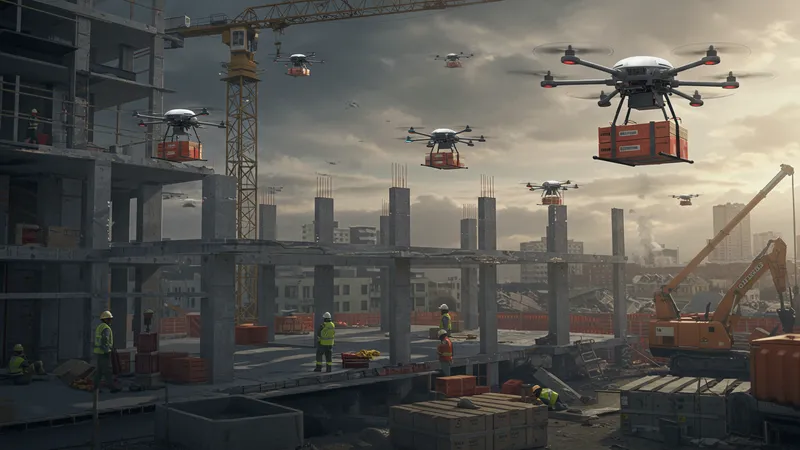
In post-disaster scenarios, drones perform critical roles by accessing affected areas swiftly, delivering essential supplies, and surveying damage. This rapid response capability can significantly mitigate loss and speed up recovery efforts. The versatility of drones thus not only enhances their value in construction but cements their place in humanitarian efforts. While their impact is profound, emerging applications continue to surface, redefining what is possible in emergency management.
Autonomous building represents another cutting-edge application where drones construct simple structures with minimal human intervention. This capability is still in the developmental phase, requiring sophisticated algorithms and engineering prowess. The prospect of fully autonomous construction projects elicits wonder and skepticism alike, emphasizing the need for continued innovation and exploration. But beyond technological wow-factor lies another facet that promises to reshape specific industry segments.
The flexibility and adaptability of drones make them ideal for niche applications, from artistic installations to precision farming. These specialized uses demonstrate the breadth of potential that drones bring to industries reliant on intricate, precise operations. As drone technology continues to mature, its integration will likely become more pronounced across diverse sectors, each uncovering unique benefits and challenges in its wake. The true potential of drones is still being explored, and what unfolds next could lead to revolutionary breakthroughs.
As cargo drones continue to revolutionize the construction industry, the workforce is undergoing a significant transformation. Job roles are changing, with an increased demand for skilled professionals capable of operating and maintaining these advanced machines. Training programs are rapidly evolving to meet the new skill sets required, preparing current workers for this technological shift. The emergence of "drone engineer" and "drone operator" as standard roles symbolizes this new reality.
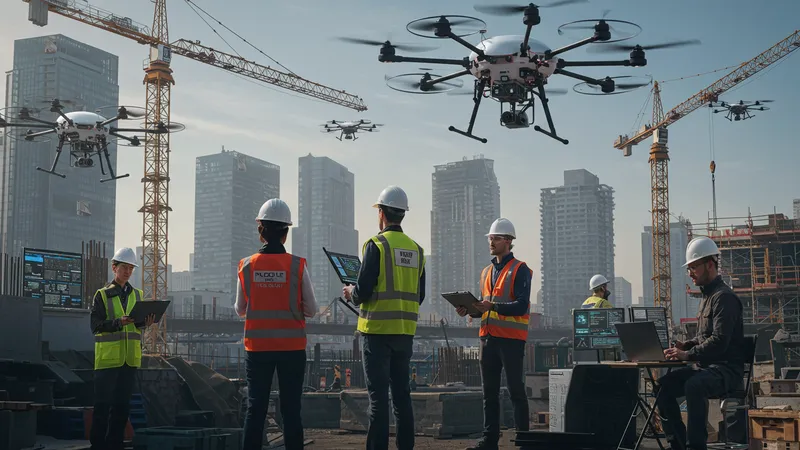
This evolution is not without its challenges. The transition may lead to job displacement for certain traditional roles, necessitating a focus on upskilling and reskilling efforts. Employers face the task of balancing technological adoption with workforce stability, ensuring employees adapt to these changes effectively. However, the potential for job creation is substantial, with new roles envisioned as the technology develops further. But curiosity remains about how these changes will affect broader employment trends.
The growing integration of cargo drones heralds opportunities for enhanced collaboration among professionals. Engineers, architects, and construction managers are working more closely with technologists and innovators to harness the full potential of drones. This cross-disciplinary collaboration is driving a new era of innovation, encouraging knowledge exchange and fostering industry growth. Yet, the integration required is complex, needing solutions that will facilitate these ongoing partnerships.
As drone technology becomes commonplace in construction, the demand for continuous professional development rises. Lifelong learning becomes a necessity rather than a choice, with educational institutions adapting curricula to incorporate drone-related studies. This shift not only prepares the existing workforce but also inspires future generations to pursue careers that involve the latest technologies. The journey to understanding the full extent of workforce evolution is just beginning, with the end not yet in sight.
The proliferation of cargo drones is indicative of a broader shift in global infrastructure, with implications resonating across various industries. These drones are bridging logistical gaps, profoundly influencing transport networks and distribution channels. As construction firms leverage drones for their logistical needs, the ripple effect extends to supply chains, driving efficiency and reducing delivery times across multiple sectors.

This shift has prompted industries to reconsider their infrastructure needs, with potential upgrades necessary to accommodate widespread drone use. Logistics hubs, warehouses, and transportation networks may require redesigning to optimize drone operations. This transformation paves the way for new business models centered around drone efficiency. However, embracing this change requires navigating significant infrastructural challenges.
While the infrastructural impact of drones is expansive, they also influence industry standards and benchmarks. As drones redefine what’s possible in terms of speed and accuracy, traditional metrics shift, demanding an overhaul in performance evaluations. Industry players are adapting to these new standards, striving to outperform competitors in a rapidly evolving marketplace. Yet, this new competitive landscape brings both opportunities and threats.
Internationally, the interoperable use of drones presents a tantalizing prospect for unifying global construction practices. The potential for universal technological standards aligns with ambitions for streamlined operations and reduced costs. However, achieving international cooperation on drone regulation and safety standards represents a formidable challenge—but one that is essential for realizing the full benefits of this technological revolution. As these developments unfold, they hint at further unseen changes within the global construction industry.
The rise of cargo drones has shifted consumer expectations when it comes to construction quality and innovation. Clients now demand projects delivered faster and with higher precision, recognizing the near-unlimited potential that drones bring. This shift is rooted in their understanding that drones provide unparalleled accuracy, translating to fewer structural errors and superior project outcomes. As a result, companies increasingly emphasize digital strategies and innovation to meet these growing expectations.
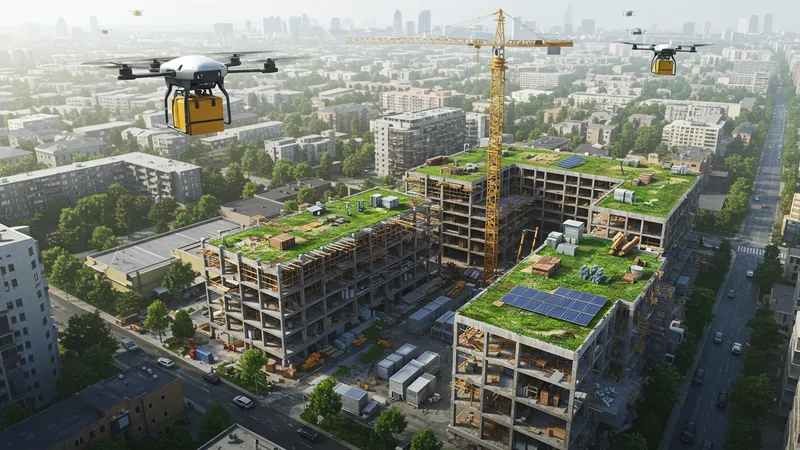
Consumer perspectives on sustainability are also impacted, with many recognizing the environmental advantages drones offer. The reduced carbon emissions and noise pollution align with growing public consciousness about ecological footprints. Sustainable practices have become a key differentiator for construction firms, heavily influencing client choices. Companies that successfully integrate drones are viewed as forward-thinking and environmentally responsible, offering a competitive edge.
The introduction of drones has not only modified client expectations but has also boosted their involvement in projects. Drones offer real-time data and visuals, improving transparency and allowing clients to monitor progress closely. This increased stakeholder involvement can enhance satisfaction and engagement, leading to more collaborative relationships. However, this transparency also holds firms to high standards, demanding even greater precision and care in execution.
Despite the many benefits, the reliance on drones introduces new complexities in client-firm dynamics. As expectations and transparency increase, so does the pressure on firms to deliver excellence consistently. Navigating these heightened expectations requires balancing technological prowess with reliable project management. The next step in this evolution focuses on how companies will harness these insights to not only meet but exceed consumer demands while safeguarding their competitive standing.
The emergence of cargo drones is only the beginning of a technological revolution poised to redefine the construction industry. Other groundbreaking technologies, such as 3D printing, augmented reality (AR), and artificial intelligence (AI), are also set to make their mark. The integration of these tools with drones opens up a plethora of possibilities, from rapid prototyping to fully automated construction processes, challenging industry norms.
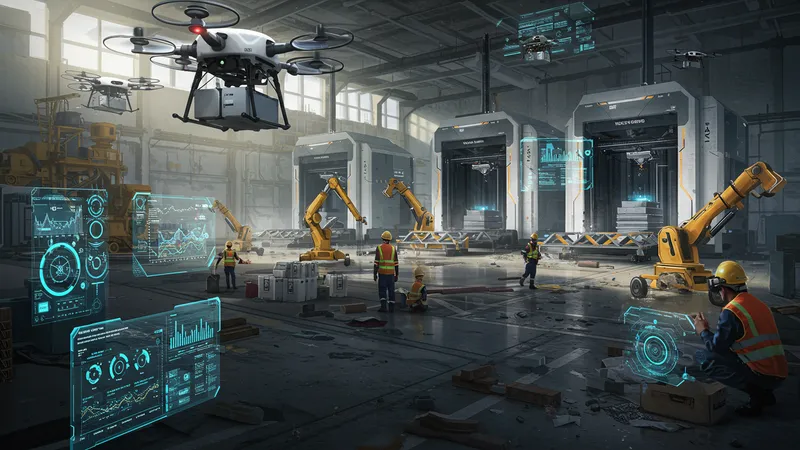
3D printing, for example, promises to complement the capabilities of drones by enabling the creation of complex structures on-site. When paired with drones, this technology has the potential to revolutionize the assembly of buildings, offering on-demand customization at a previously unimaginable scale. This partnership between drones and 3D printing could reshape architectural designs and execution methodologies, making personalized construction the standard.
Augmented reality, when used in conjunction with drones, provides construction teams with precise visual overlays, enhancing spatial understanding and decision-making. This technology assists workers by displaying real-time data and project guidelines directly in their environment, maximizing efficiency and reducing error. The synergy between drones and AR can significantly increase productivity, but it also requires substantial investment and training to implement effectively.
The integration of artificial intelligence with drones is perhaps the most transformative prospect. AI can optimize flight paths, predict maintenance needs, and even autonomously plan complex delivery schedules. Combining AI-driven insights with drones offers unmatched project management capabilities, revolutionizing how construction sites are monitored and controlled. This fusion of intelligence and technology stands ready to propel the industry into new realms of possibility, promising further spectacular advancements.
The transformative impact of cargo drones on the construction industry is a testament to the boundless potential of innovation. These machines have sparked a revolution, improving efficiency, safety, and sustainability like never before. As we continue to unlock new applications and overcome existing challenges, the construction landscape stands on the brink of unprecedented change.
As drone technology evolves, so too does the need for industry adaptation and growth. Stakeholders must embrace these changes with an open mind, ready to integrate new technologies that will shape the future of construction. Sharing this knowledge and inspiring others to explore drone utilization could hold the key to unlocking an era of sustainable, efficient, and innovative building practices. Join the conversation, explore the possibilities, and take part in the future of construction.